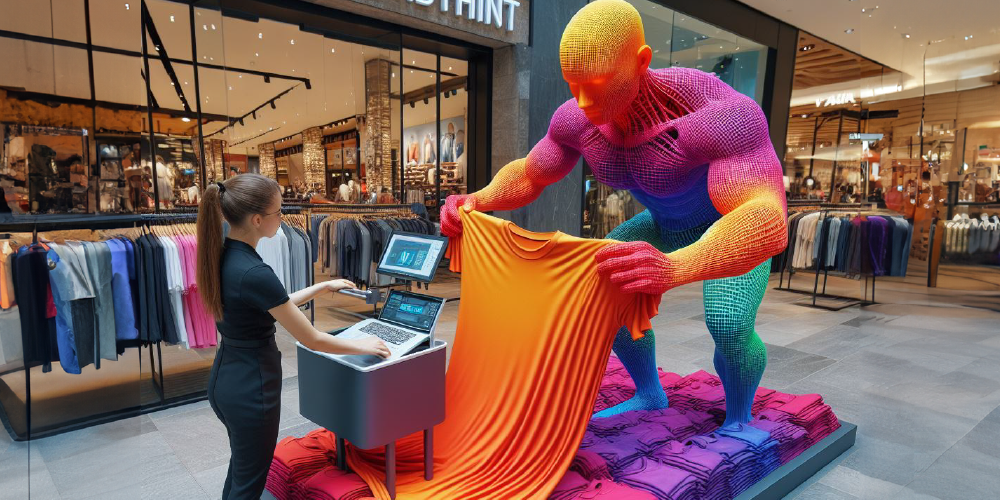In the world of eCommerce, the visual appeal of products plays a crucial role in attracting customers and driving sales. With the advancements in artificial intelligence (AI) and image processing techniques, AI-generated images have emerged as a potential solution for automating image editing and generation tasks. However, the question remains: Can AI generate pictures that are good for eCommerce? This blog will explore the positive and negative perspectives on applying AI-generated images in eCommerce, considering their current limitations and prospects.
AI-Based Images and Generative Image Models : AI-based images refer to images edited using AI algorithms and techniques. Generative image models, such as DALL-E, Stable Diffusion and similar tools, have gained significant attention for their ability to create novel and realistic images based on textual descriptions. These models use large-scale training data and powerful deep-learning algorithms to learn patterns and generate images that often exhibit high levels of visual fidelity.
Optimistic Viewpoint: Enhancing and Automating Image Editing One of the critical advantages of AI in eCommerce is its potential to automate image editing tasks. AI-enabled image editing tools can quickly process and enhance bulk images, saving time and effort for eCommerce businesses. Automated image editing features, such as background removal, color correction, and image resizing, can be efficiently performed using AI algorithms. It streamlines the image editing workflow, ensuring consistent quality across product images.
Opposing Viewpoint: Limitations in Product Representation While AI-generated images show promise, they currently have limitations when it comes to representing complex products accurately. Product images in eCommerce often need to be sourced from the original website or require a dedicated photo shoot to capture each item’s unique features and attributes. AI-generated images, on the other hand, may need more specific details and variations that customers expect to see. For instance, intricate textures, fabric details, or product dimensions may not be accurately portrayed in AI-generated images, resulting in misleading representations for potential customers.
Future Prospects and Challenges: The prospects of AI-generated images in eCommerce are promising, but the user needs to address several challenges. As AI models evolve, they become more capable of generating highly realistic product images. Advances in image processing and generation techniques could enable AI to incorporate finer details, textures, and variations, bridging the gap between AI-generated pictures and actual product representations.
Furthermore, integrating AI with augmented reality (AR) technology holds immense potential for eCommerce. AR can overlay virtual objects onto the real world, allowing customers to visualize products more realistically. AI-generated images could seamlessly integrate with AR applications, providing an interactive and immersive shopping experience.
Tools Available in the Market: Several AI-enabled image editing tools and platforms are already available. DALL-E, developed by OpenAI, is an impressive example of a generative image model that can generate images from textual descriptions. Additionally, AI-powered image editing solutions can automate tasks like background removal, object recognition, and image enhancement.
DALL-E : DALL-E, developed by OpenAI, is a groundbreaking AI model that generates high-quality images from textual descriptions. It utilizes a vast dataset and powerful deep-learning algorithms to create visually stunning and unique photos. eCommerce businesses can leverage DALL-E to generate product images based on specific descriptions, adding variety and visual appeal to their offerings.
Background Removal Tools : Background removal is a common image editing task in eCommerce. Several AI-powered tools are available to automate this process. Tools like remove. Bg and DeepArt.io use advanced algorithms to accurately remove backgrounds from images, saving time and effort for eCommerce businesses. These tools ensure clean, professional-looking product images, ready for use on websites and online marketplaces.
Image Upscaling and Enhancement Tools : To ensure that product images are visually appealing and showcase the finest details, one can employ AI-powered images for upscaling and enhancement tools. Upscale photos with tools like Let’s Enhance and Waifu2x, which utilize AI algorithms to increase image resolution without significant loss in quality. These tools enhance sharpness, color accuracy, and overall image quality, making product images more enticing for customers.
Style Transfer and Image Editing Tools : AI-based style transfer tools allow eCommerce businesses to experiment with different visual styles for their product images. Neural Style Transfer algorithms, implemented in tools like DeepArt and Prisma, enable users to apply the characteristics of one image to another, resulting in unique and eye-catching visuals. It can help businesses create a distinct brand identity and engage customers with visually appealing product images.
Image Recognition and Object Detection Tools : AI-powered image recognition and object detection tools can automate tagging and categorizing products. These tools can identify objects within images and assign relevant tags, making organizing and searching for specific products in an eCommerce inventory easier. TensorFlow and OpenCV provide powerful frameworks for building custom image recognition models tailored to specific eCommerce requirements.
Conclusion: While AI-generated images have shown promising results in automating image editing and generation tasks for eCommerce, they must be more accurate in representing complex products. AI can assist in editing or adding backgrounds. Still, sourcing product images from original websites or through photo shoots remains necessary for capturing the unique attributes of each item. As AI and image processing techniques continue to advance, the prospects of AI-generated images in eCommerce look bright. With improved realism and integration with AR technology, AI-generated ideas could revolutionize how customers interact with products online.





